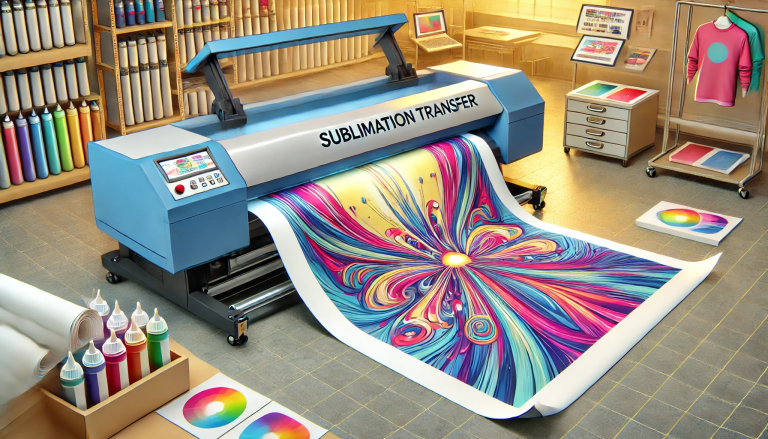“Don’t let your prints fade away – use Dye Inkjet Sublimation Paper for long-lasting results!” – SUBLIMATIONTRANSFERPAPER –A1 Sublimation Heat Paper Wholesale, Inkjet Sublimation Paper Roll Factory, Made in China
Introduction
Dye inkjet sublimation paper is a specialized type of paper used in the process of sublimation printing. Sublimation printing is a process that uses heat to transfer dye onto a variety of materials, including paper, fabric, and plastic. While this process is usually successful, there are times when the dye does not transfer properly. In these cases, it is important to understand the reasons why the dye inkjet sublimation paper did not transfer, so that the issue can be corrected and the desired results achieved.
Comparing Different Types of Dye Inkjet Sublimation Paper for Transfer Quality
When it comes to transferring images onto fabric, dye sublimation paper is an essential component. The quality of the transfer is largely dependent on the type of paper used. There are several different types of dye inkjet sublimation paper available, each with its unique characteristics. In this article, we will compare the different types of dye inkjet sublimation paper and discuss which type is best for achieving the highest quality transfer.
The first type of dye inkjet sublimation paper is the standard transfer paper. This type of paper is designed to be used with a standard inkjet printer and is the most commonly used type of paper for transferring images onto fabric. Standard transfer paper is relatively inexpensive and produces good-quality transfers. However, it is not as durable as other types of paper and can be prone to smudging and fading over time.
The second type of dye inkjet sublimation paper is premium transfer paper. This type of paper is designed to be used with a high-end inkjet printer and produces superior-quality transfers. Premium transfer paper is more expensive than standard transfer paper, but it is also more durable and produces higher-quality transfers that are less prone to smudging and fading.
The third type of dye inkjet sublimation paper is the transfer film. This type of paper is designed to be used with a laser printer and produces the highest quality transfers. The transfer film is the most expensive type of paper, but it is also the most durable and produces the highest quality transfers that are less prone to smudging and fading.
In conclusion, when it comes to achieving the highest quality transfer, the type of dye inkjet sublimation paper used is an important factor. Standard transfer paper is the most commonly used type of paper and is relatively inexpensive, but it is not as durable as other types of paper. Premium transfer paper is more expensive but produces higher-quality transfers that are less prone to smudging and fading. The transfer film is the most expensive type of paper, but it is also the most durable and produces the highest quality transfers.
The Benefits of Using High-Quality Dye Inkjet Sublimation Paper
Dye inkjet sublimation paper is a type of specialized paper that is used in the printing process of sublimation. This paper is designed to be used with dye-based inks and is specifically designed to produce high-quality prints. The use of this paper can provide several benefits to those who are looking to produce high-quality prints.
One of the primary benefits of using high-quality dye inkjet sublimation paper is that it produces prints with a high level of detail and clarity. This paper is designed to absorb the dye-based inks, which helps to ensure that the colors are vibrant and the details are sharp. This makes it ideal for producing prints that have a professional look and feel.
Another benefit of using this type of paper is that it is designed to be resistant to fading. This is important for those who are looking to produce prints that will last for a long time. The paper is designed to be resistant to UV light, which helps to ensure that the colors will remain vibrant for a long period.
The use of this paper also helps to ensure that the prints are water-resistant. This is important for those who are looking to produce prints that can be used outdoors or in wet conditions. The paper is designed to be resistant to water, which helps to ensure that the prints will not be damaged by moisture.
Finally, the use of this paper helps to ensure that the prints are durable. This is important for those who are looking to produce prints that will last for a long time. The paper is designed to be resistant to scratches and other damage, which helps to ensure that the prints will remain in good condition for a long period.
Overall, the use of high-quality dye inkjet sublimation paper can provide several benefits to those who are looking to produce high-quality prints. This paper is designed to absorb the dye-based inks, which helps to ensure that the colors are vibrant and the details are sharp. It is also designed to be resistant to fading and water, which helps to ensure that the prints will last for a long time. Finally, the paper is designed to be durable, which helps to ensure that the prints will remain in good condition for a long period.
How to Improve the Quality of Dye Inkjet Sublimation Paper Transfers
Dye inkjet sublimation paper transfers are a popular method of transferring images onto fabric and other materials. However, the quality of the transfer can vary depending on the type of paper used and the printing process. To ensure the best possible results, several steps can be taken to improve the quality of dye inkjet sublimation paper transfers.
First, it is important to select the right type of paper for the job. Sublimation paper is available in a variety of weights and finishes, and the type of paper used will affect the quality of the transfer. For best results, it is recommended to use heavyweight paper with a glossy finish. This will help to ensure that the colors are vibrant and the image is sharp.
Second, it is important to use the correct printer settings. When printing on sublimation paper, it is important to select the correct paper type and print quality settings. For best results, it is recommended to use the highest quality setting available. This will help to ensure that the colors are accurate and the image is sharp.
Third, it is important to use the correct ink. Sublimation ink is specially formulated for use with sublimation paper, and it is important to use the correct type of ink for the job. Using the wrong type of ink can result in poor-quality transfers.
Finally, it is important to use the correct heat settings. Sublimation paper transfers require a specific temperature and pressure to ensure that the image is transferred correctly. It is important to use the correct settings to ensure that the image is transferred correctly and that the colors are vibrant.
By following these steps, it is possible to improve the quality of dye inkjet sublimation paper transfers. By selecting the right type of paper, using the correct printer settings, using the correct ink, and using the proper heat settings, it is possible to achieve excellent results.
Exploring the Causes of Poor Dye Inkjet Sublimation Paper Transfer
Dye inkjet sublimation paper transfer is a popular method of transferring images onto fabric, but it can be difficult to achieve a successful transfer. Poor dye inkjet sublimation paper transfer can be caused by a variety of factors, including incorrect paper selection, incorrect printer settings, and incorrect heat press settings.
Paper Selection
The type of paper used for dye inkjet sublimation paper transfer is important for achieving a successful transfer. Sublimation paper is specifically designed for this type of transfer and should be used for best results. Other types of paper, such as regular printer paper, will not work as well and may cause poor transfer results. Additionally, the weight of the paper should be taken into consideration. Heavier paper is better for transferring images onto fabric, as it is more resistant to warping and curling.
Printer Settings
Incorrect printer settings can also cause poor dye inkjet sublimation paper transfer. The printer should be set to the highest quality setting and the paper type should be set to “sublimation paper” or “dye sublimation paper”. Additionally, the printer should be set to the correct color profile for the type of paper being used. If the wrong color profile is used, the colors of the image may be distorted or inaccurate.
Heat Press Settings
Finally, incorrect heat press settings can cause poor dye inkjet sublimation paper transfer. The temperature and pressure of the heat press should be set according to the manufacturer’s instructions. Additionally, the time should be adjusted to ensure that the image is fully transferred onto the fabric. If the temperature is too low or the time is too short, the image may not transfer properly.
By taking the time to select the correct paper, adjust the printer settings, and adjust the heat press settings, it is possible to achieve a successful dye inkjet sublimation paper transfer. With the right combination of materials and settings, it is possible to achieve a professional-looking transfer that will last for years.
Troubleshooting Tips for When Dye Inkjet Sublimation Paper Does Not Transfer
If you are having trouble transferring dye inkjet sublimation paper to your desired surface, there are a few troubleshooting tips you can try.
First, make sure that the temperature and time settings on your heat press are correct. The temperature should be between 385-400°F and the time should be between 45-60 seconds. If the temperature is too low, the transfer will not be complete. If the temperature is too high, the paper may burn.
Second, make sure that the pressure on your heat press is correct. The pressure should be between medium and heavy. If the pressure is too light, the transfer will not be complete. If the pressure is too heavy, the paper may be damaged.
Third, make sure that the paper is properly aligned on the surface. If the paper is not aligned correctly, the transfer will not be complete.
Fourth, make sure that the paper is not exposed to any moisture. If the paper is exposed to moisture, the transfer will not be complete.
Finally, make sure that the paper is compatible with the surface you are transferring it to. Different surfaces require different types of paper. If the paper is not compatible with the surface, the transfer will not be complete.
By following these troubleshooting tips, you should be able to successfully transfer dye inkjet sublimation paper to your desired surface.
Conclusion
In conclusion, if Dye Inkjet Sublimation Paper does not transfer, it is likely due to a number of factors, such as incorrect settings, incorrect paper type, or incorrect ink type. It is important to ensure that all of these factors are correct before attempting to transfer the image. If the image still does not transfer, it may be necessary to try a different type of paper or ink.




